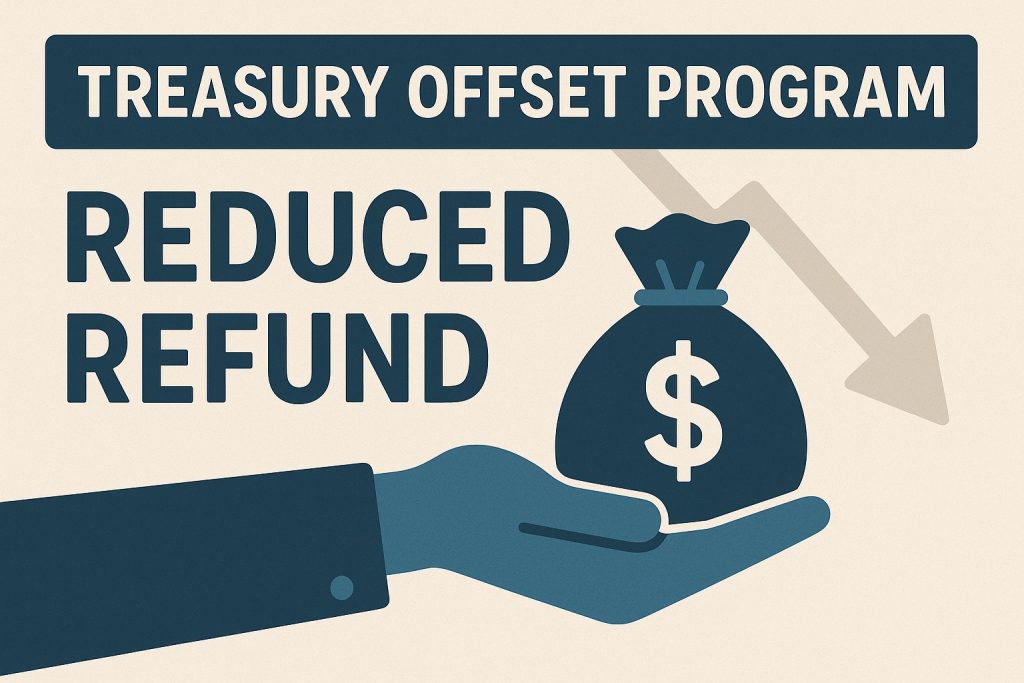Waiting for your tax refund only to find it’s less than expected can be a frustrating surprise. If your refund was reduced, there’s a good chance the Treasury Offset Program (TOP) is involved. But what exactly is TOP? Why would your refund be reduced? And what steps can you take if it happens to you? Let’s break it down in simple terms so every taxpayer understands what this means.

What Is the Treasury Offset Program (TOP)?
The Treasury Offset Program is a government initiative that collects overdue debts by reducing federal payments, including your tax refund. If you owe money for things like past-due child support, federal or state taxes, student loans, or certain other debts, TOP can intercept all or part of your refund to pay these bills.
This program is run by the U.S. Department of Treasury’s Bureau of Fiscal Service (BFS) in cooperation with federal and state agencies.
Why Was My Refund Reduced?
Your refund may have been offset because you have a debt that meets these criteria:
- Child support payments you have fallen behind on.
- Unpaid federal or state income taxes.
- Federal student loans in default.
- Other federal non-tax debts or state debts certified to the Treasury.
TOP reduces your refund by the debt amount owed and sends that money directly to the agency you’re indebted to.
How Will I Know My Refund Was Offset?
The Bureau of Fiscal Service will send you a Notice of Offset letting you know:
- Your original refund amount.
- The amount offset.
- The agency receiving your payment.
- Contact details for that agency so you can get more information.
If you didn’t receive the notice or want more info, you can contact BFS’s TOP call center at 800-304-3107.
What If I Don’t Owe the Debt or Want to Dispute It?
You must contact the agency listed on the offset notice, not the IRS, to dispute the debt or request an administrative review. The IRS only processes the offset but isn’t responsible for the underlying debt.
Can I Get My Portion of a Joint Return if Only My Spouse Owes Debt?
Yes. If you filed jointly but only one spouse owes the debt, you can file Form 8379, Injured Spouse Allocation to claim your part of the refund that isn’t subject to offset. It typically takes around 11-14 weeks to process.
How Long Does It Take for an Offset Refund to Reach the Agency?
It may take several weeks for the offset funds to disburse to the creditor agency after Treasury intercepts your refund.
How Can I Avoid Refund Offsets in the Future?
- Stay current on child support and loan payments.
- Resolve outstanding federal or state tax debts promptly.
- Monitor your accounts and notices carefully.
- Communicate with agencies if you’re experiencing financial hardship.
What Should I Do Next?
- Review the Notice: Understand the offset amount and creditor agency.
- Contact the Agency: Verify your debt and explore payment or dispute options.
- Consider Injured Spouse Relief: If applicable, file the necessary forms for your share of the refund.
- Keep Records: Save all correspondence for your protection.
- Monitor Future Refunds: Check your status with the IRS and BFS regularly.
Final Thoughts
The Treasury Offset Program helps the government recover unpaid debts by reducing your federal tax refund when necessary. Though it can be disappointing to get less than expected, responding quickly and proactively can help you resolve your debts and avoid future refund surprises.
Knowing what TOP is and how it works gives you the power to manage your tax refund and debts with confidence.
